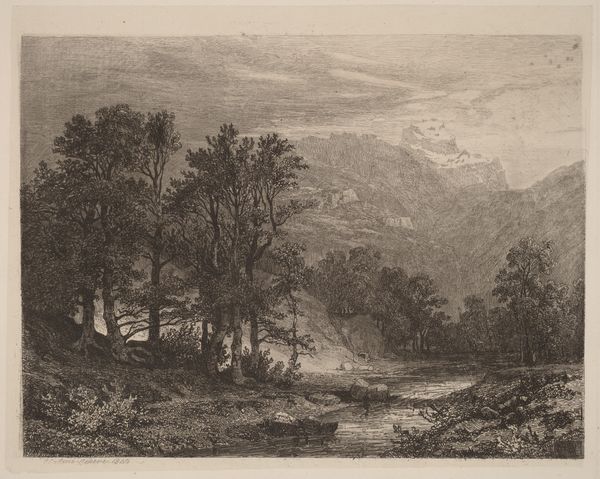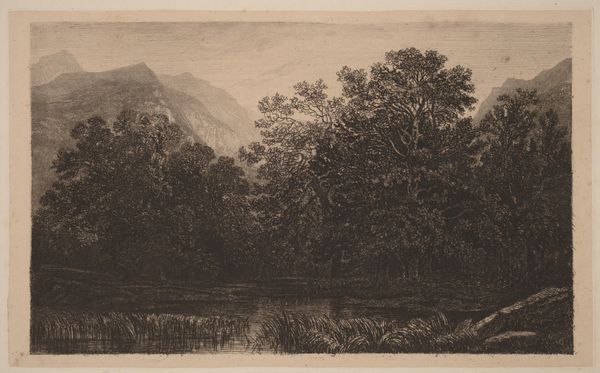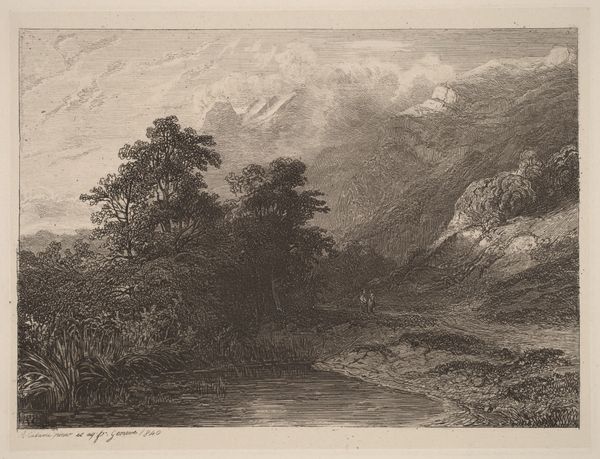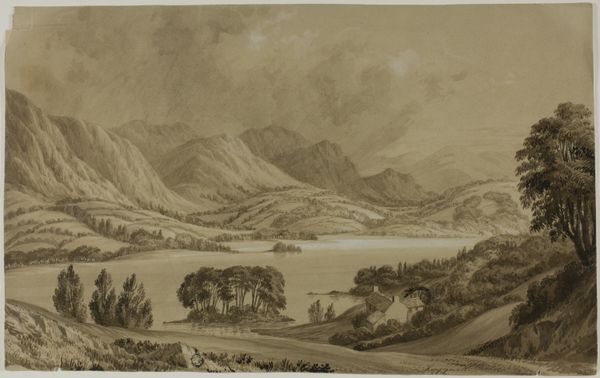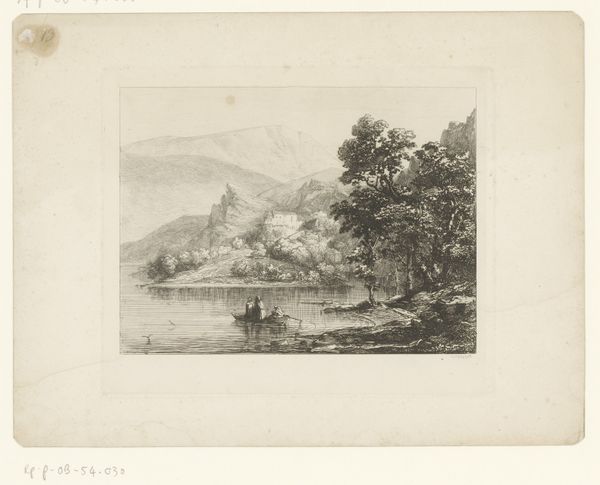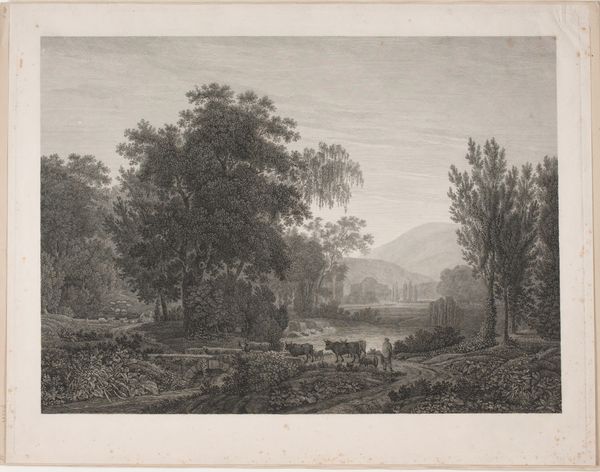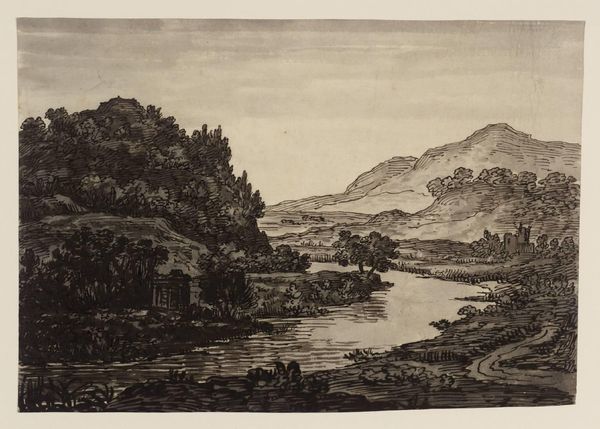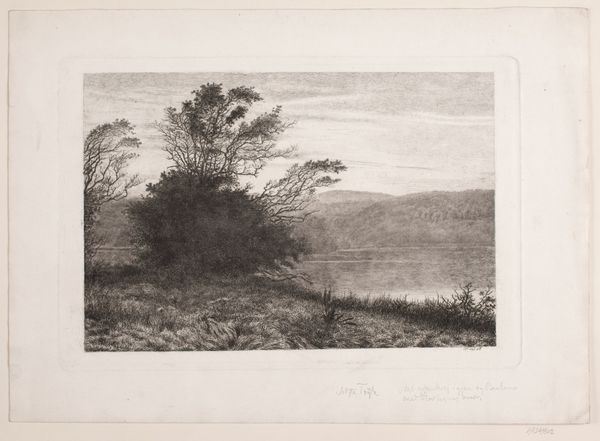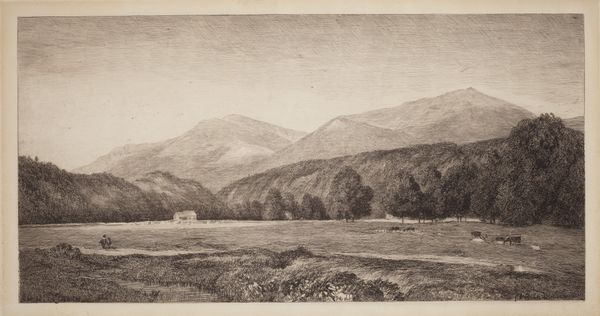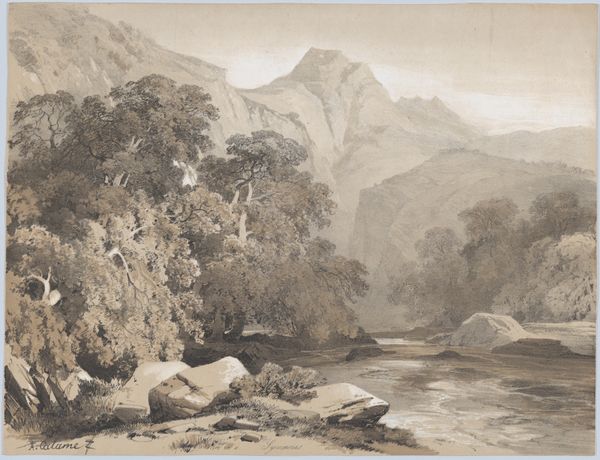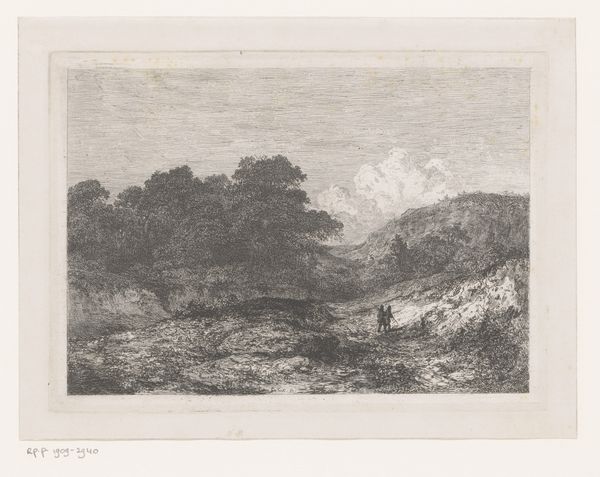
drawing, print, etching, engraving
#
drawing
# print
#
etching
#
landscape
#
romanticism
#
engraving
Dimensions: plate: 14.8 x 21.8 cm (5 13/16 x 8 9/16 in.) sheet: 27 x 35.8 cm (10 5/8 x 14 1/8 in.)
Copyright: National Gallery of Art: CC0 1.0
Editor: This is Alexandre Calame’s “Mountain River,” an etching from 1840. It's quite atmospheric, I think, with the looming mountains in the background contrasting with the tranquil river in the foreground. What do you see in this piece from a formalist perspective? Curator: Certainly. From a formalist standpoint, the engraving presents a compelling study in contrasts. Note how the artist employs line weight to create depth: delicate, light lines suggesting atmospheric perspective in the mountains versus denser, heavier lines to define the trees and riverbank in the foreground. How does that directional arrangement guide your eyes through the image? Editor: I see how the shading directs my gaze, pulling me back toward the waterfall nestled among the mountains. The composition uses light and shadow to highlight specific elements. Curator: Precisely. The artist’s manipulation of light through engraving techniques serves not merely to depict the scene, but to structure our perception of it. The distribution of dark and light shapes organizes our interpretation of space, doesn't it? It brings focus to different planes within the composition, shaping how the image is read. Editor: So, it’s not just about what’s depicted, but how those elements interact visually. I wouldn't have noticed that at first glance. Curator: Indeed. It's about the syntax of the visual language employed. By focusing on the internal elements of the artwork, we unlock its compositional strength. Now that we have gone deeper into this, does that influence how you appreciate the piece as a whole? Editor: Definitely. It highlights how intentional the artistic choices are, enhancing my appreciation for the craft. Curator: And that is what makes engaging with visual formalism exciting. Thank you for bringing that to my attention.
Comments
No comments
Be the first to comment and join the conversation on the ultimate creative platform.
